And don’t be afraid to ask us even more questions. Half the fun of taking care of your houseplants, garden beds or vegetable patches is sharing the love of growing things.

Planning for exposure
In North America, the Sun always shines from the south. Some plants thrive in direct sunlight, some like the shade. Some like the wind, others go to pieces. Every yard, patio or balcony has different factors for the amount of light, wind and rain it gets.
Fences can make your north side even shadier, or provide more protection against wind. The colour of house siding changes reflectivity. For example, white siding makes south exposure even brighter and hotter. The size and location of mature trees also affects Sun, wind and weather exposure.
The diagram shows the typical path of the Sun:
North – Full shade
East – Part Sun, part shade
South – Full Sun; hottest exposure
West – Part Sun to full Sun; gets hot in the late afternoon

What should I add to my soil before I plant?
Adding compost is the best amendment for improving soil conditions. The City of Edmonton has a very good course on how to properly compost. They also offer expert advice with a composting coach.
Most potting mixes are blended for pots to avoid waterlogging. Never use soil straight from the garden. If the soil is composed mostly of peat moss, it can dry out more quickly. By adding a small amount of compost it will improve water retention.
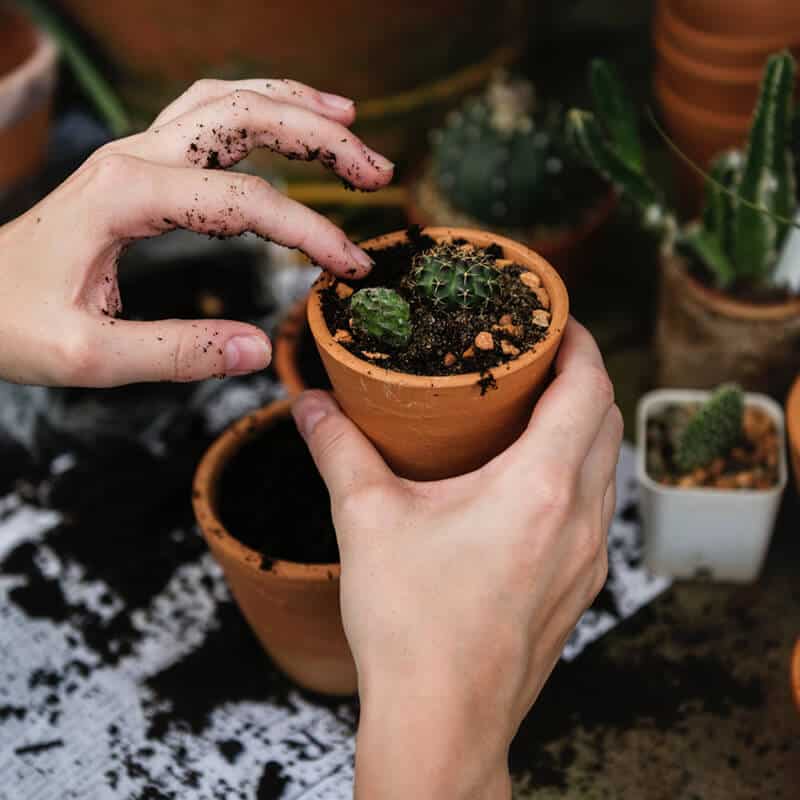
How to trans-plant
- Choose appropriate plants for your exposure and yard conditions
- It’s important to acclimate your plants before planting, with the time necessary ranging from a few days to a week
- Leave your plants outside during the day (and night if temperatures are safe to do so) in the shade the first few days
- Full-Sun plants leave in shade for a day or two then move to the Sun in a sheltered location
- This will give plants time to adjust from the greenhouse to your yard, and avoid leaf-edge burn
- For typically cool annuals that are grown outside like Pansies or perennials
- Never transplant a dry plant: water before planting
- Always water your plants well

How to water plants
- It is best to water in the morning as to allow the plant material to dry off during the day
- Avoid watering plant leaves to prevent foliar diseases
- Make sure the water reaches the roots
- Apply water gradually so to allow it to fully tack up the water
- Avoid waterlogging hanging baskets and containers
- Pro Tip: For better watering of garden beds, plant an empty pot in the ground, then when watering your garden fill the pot up for deeper waterings – use at least a 5″–6″ pot (tomatoes love this method)
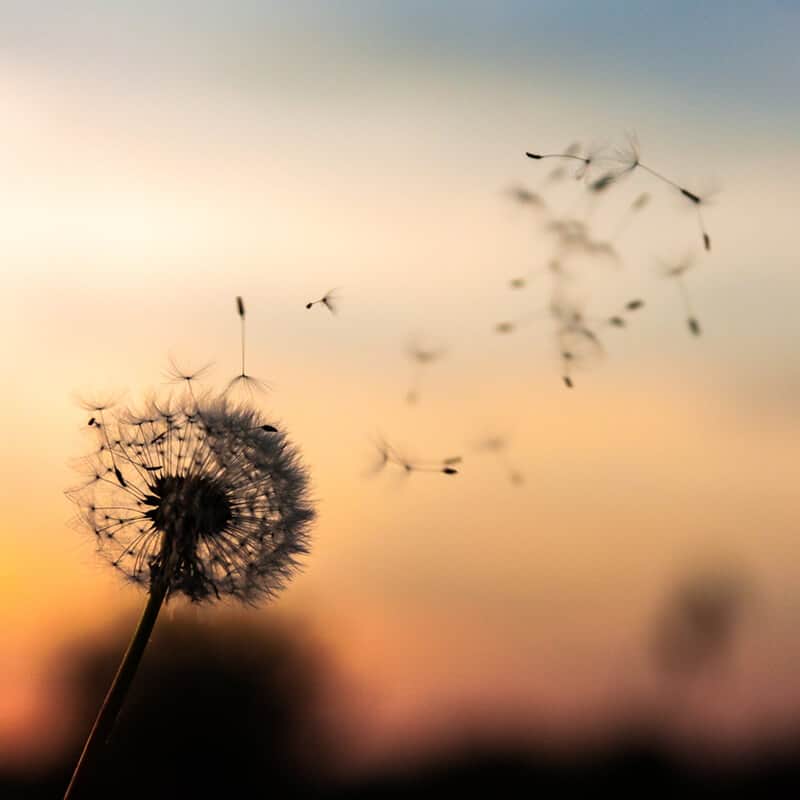
Wind protection
Wind can do real damage to a plant, symptoms of wind damage include:
- Leaf-edge burn or leaf scorch that looks like a sunburn turning the leaf surface white
- A severe form of drying out called desiccation, parts or the whole plant dries out
Areas prone to wind damage – basically anything elevated can be exposed to the wind:
- Hanging Baskets
- Balconies or Decks
- Unfenced or exposed yards
Prevention
Important: Make sure plants are well watered. You might need to water multiple times during a critical time.
Make a windbreak microclimate
- Fences or a wind barrier
- Larger shrubs
Watch for wind warnings:
- Cover sensitive plants, if possible with a light sheet or reemay cloth
- Take hanging baskets down
To keep your perennials standing upright, try staking plants like Delphinium and Monkshood early in the season.
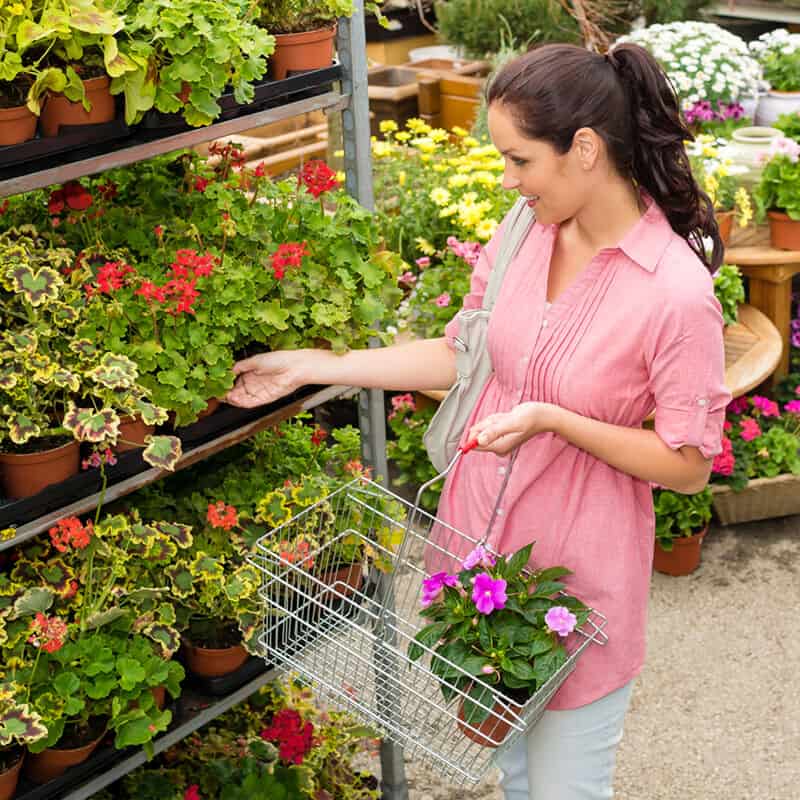
What to look for when buying a plant
- The biggest plant may not guarantee it is the best plant
- Look for signs of unhealthiness such as blemishes, disease, pests
- Look for signs of neglect such as roots growing out of the pot base or weeds in the pot

Where to plant specific plants or What do those labels mean?
- Labels are meant to educate people on that plant’s placement and care
- Labels include plant name, size, light requirements, watering needs, care and use
- Labels have specialized info such as potential hazards to children and pets
- Always read the labels, they’re there to help you make an informed decision
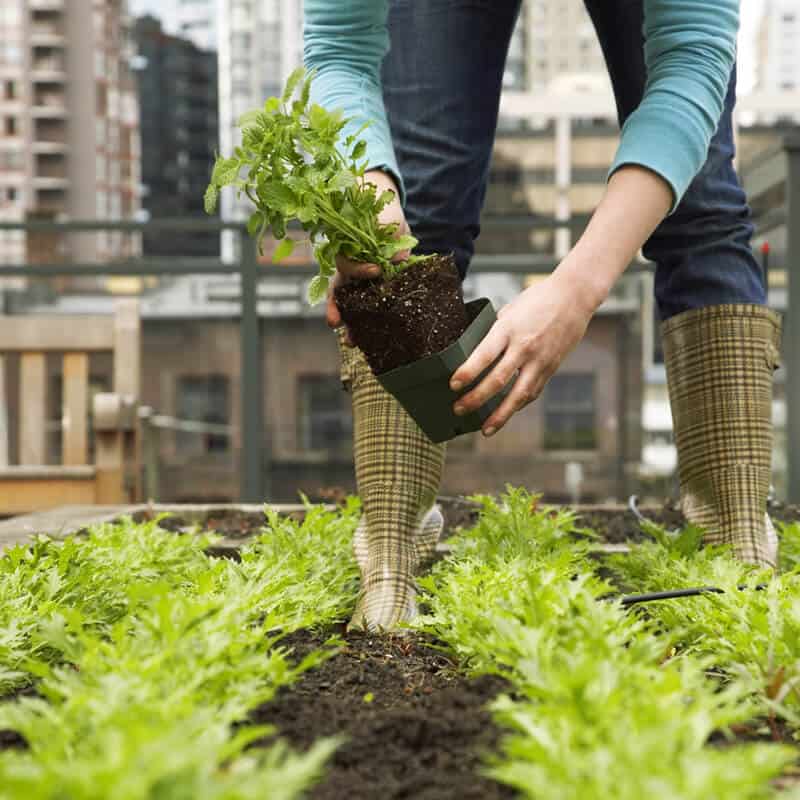
When should I plant?
- When the night temperature does not get below 10°C/50°F
- Some say after the May long weekend or first weekend in June for annuals
- Watch forecasts for evening temperatures
- Bulbs can be planted out in the Fall
- Perennials Spring, Summer or Fall

How to choose a fertilizer
20·20·20 · N·P·K · Nitrogen·Phosphorus·Potassium
There’s a simple way of remembering these numbers, but remember plants all use nutrients differently, just like people:
Up, Down, All Around
- Up – Nitrogen (N) for top growth
- Down – Phosphorus (P) for root growth
- All around – Potassium (K) for overall plant health and flowering
Plants do not care about marketing labels. Choose the right fertilizer based on the analysis on the side. Come visit us to help you make a more-informed decision about what is right for your garden or houseplants. For example, Arch carries organic fertilizers with calcium, the perfect food for tomatoes and geraniums.
We recommend to cut the weekly fertilizer rate into quarters (feed four times) or halves (feed two times) but feed more often during the week. Think of it as a buffet meal a week versus regular/consistent meals. Plants will only use what they need. This is how we feed in our greenhouses.
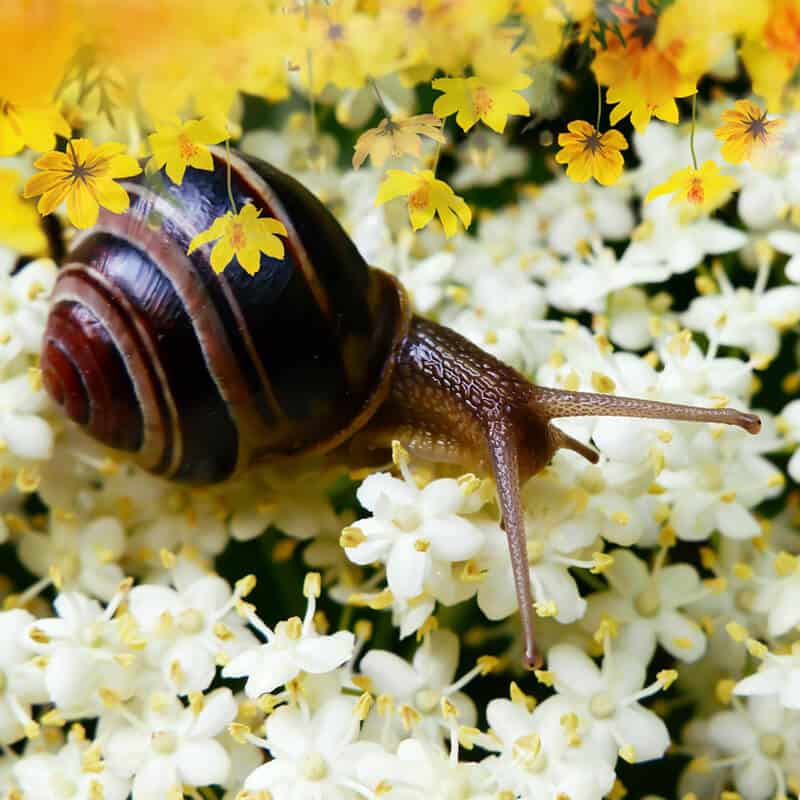
Bugs on plants – when to use pesticides
Know what you are dealing with:
- Arch will examine insect and disease specimens if they are brought in in a sealed bag with contact information attached to it
- We’ll rule out physiological problems or diseases
- We’ll let you know if a pesticide is required
NOTE: As a licenced pesticide applicator, our greenhouse manager Aaron is required to educate customers on Health Canada guidelines for safe pesticide usage.
Remember
- Chemicals are not always needed
- Not all insects are bad, in fact, they might actually be a beneficial predator eating pests
- Keep garden beds as weed free as possible – weeds can act as a host for insects like aphids
- Don’t over-fertilize your plants with high-nitrogen fertilizers – they cause weak, soft growth that is attractive to most pests

Dead heading
Remove withered flower heads:
- Pinch below the spent flower to the first set of full leaves
- It helps keep the plant fresh, elongating blooming season for annuals
- Improves the æsthetics of the plant
- Ensures the other flowers are not reminded of their own mortality
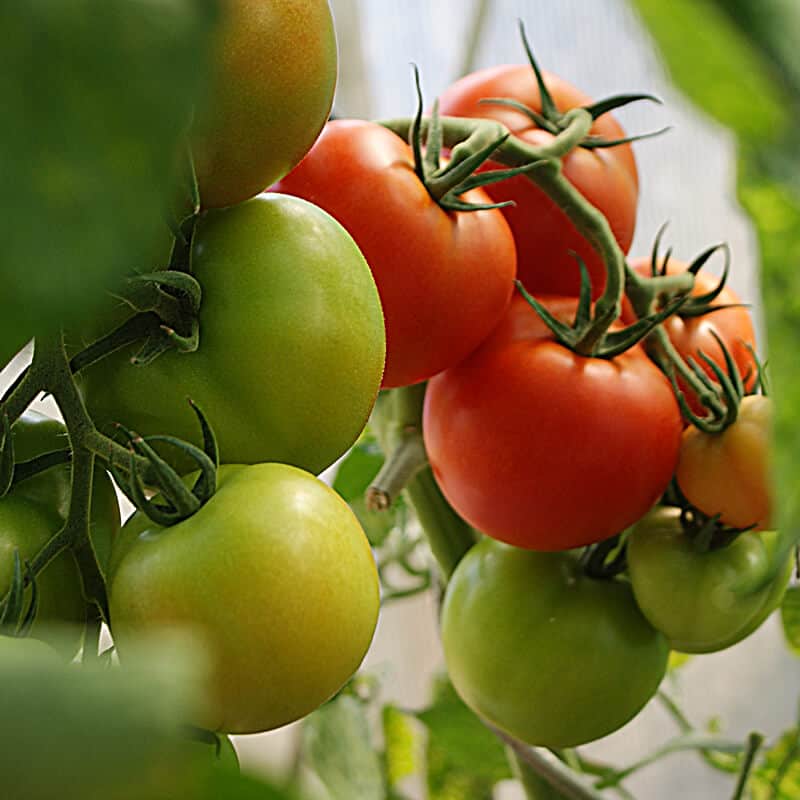
Tomato care
Tomato terms
- Indeterminate
- These tomatoes are very vigourous and will require pruning and support with either with cages or stakes – think of them like vines
- Fruit sets along the vine and most ripen gradually over the season
- Typically cherry, grape, slicers
- Determinate
- These tomatoes are more compact and typically stop growing when the fruit is set at the top bud, they need limited staking and some varieties are used in containers or hanging baskets
- All tomatoes ripen at around the same time
- Typically plum (Roma), some cherry and slicers
- Semi-determinate
- More compact than indeterminate types but are also capable of producing fruit throughout the season
- Truss
Tomato types
- Beefsteak – Pro Tip: For larger tomatoes prune your truss to leave only two or three tomatoes
- Slicers
- Plum/Roma
- Grape
- Cherry
Heirloom versus hybrids
Heirlooms have great features in terms of taste, colour and cool fruit shapes. Some varieties can be more prone to some diseases and the fruit is not always the prettiest, but they’e worth the extra effort. The top three personal heirloom favourites:
- Brandywine – large pink-fruited tomato – great tasting
- Persimmon – sweet orange slicer
- Yellow Pear – yellow teardrop shaped cherry tomatoes
Hybrids have great features. They are easy to grow, and have been bred for disease resistance and superior fruit production. Their fruit tends to be more uniform. The top three personal hybrid favourites:
- Sungold – sweet orange cherry tomatoes
- Rapunzel – red cherry that produces an extremely-long truss
- Great White – Pale yellow tomato – fantastic taste
Tomato fertilizing
It’s all about preventing blossom-end rot:
- It’s most prevalent in slicers and beefsteak varieties
- Important: Calcium is important for plants like tomatoes and geraniums, always check the analysis on the fertilizer package to make sure it contains calcium – Arch carries organic fertilizers loaded with calcium
- Calcium will strengthen cell walls in tomatoes – as it strengthens our bones, plus it gives the leaves a very dark green look
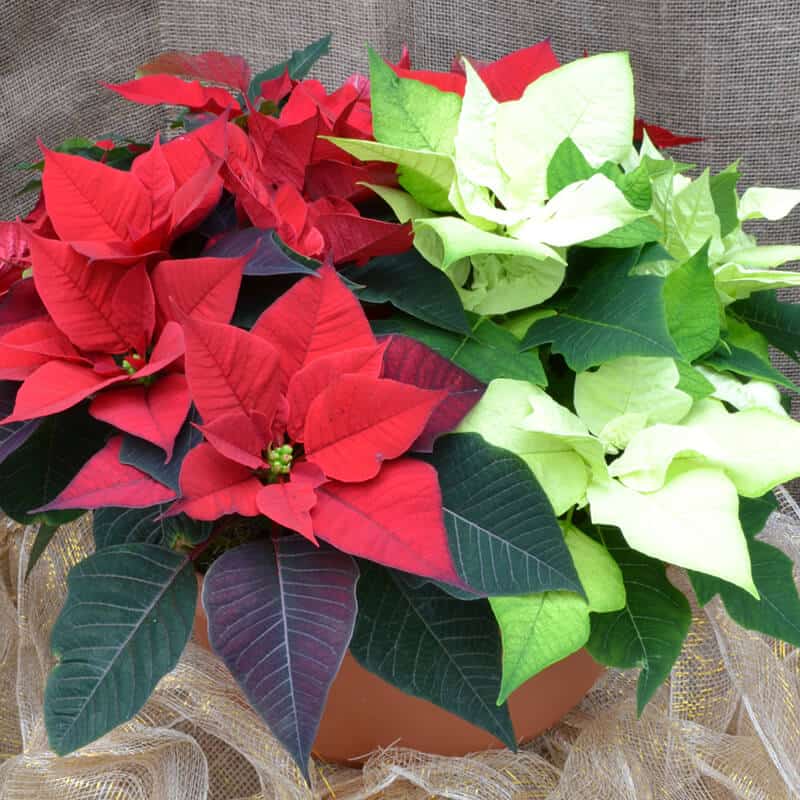
Poinsettia Care
Poinsettias are very temperature sensitive; they neither like to be too warm nor too cold; something in the range of 60–70°F / 16–21°C is ideal. Take your poinsettia home in a well-warmed vehicle. Once home, place your poinsettia away from any drafts (near windows, doors, or heat vents) in a spot where it will receive at least six hours of bright – but not direct – sunlight.
As poinsettia stems and branches are easily broken from pressure put on them, when taking your poinsettia home, support your well-wrapped poinsettia from the base, taking care not to crush the sides of the sleeve in any way. Take your poinsettia out of the sleeve as soon as possible by carefully ripping or cutting the sleeve from the bottom up. Do not try to save the sleeve. To help prevent stem breakage, put your poinsettia in a place where it will not be touched or brushed against.
Poinsettias do not like to be too wet nor too dry. Water to the point of water running out of the drainage holes whenever the soil is dry to the touch, or when picked up the plant feels lighter than you would think it would be. To avoid drowning the plant, do not allow the poinsettia to sit in water. If you leave the poinsettia in the speed hat we supplied at the time of sale, we recommend removing the speed hat before watering, and watering the plant over a sink, replacing the speed hat after dripping ceases.
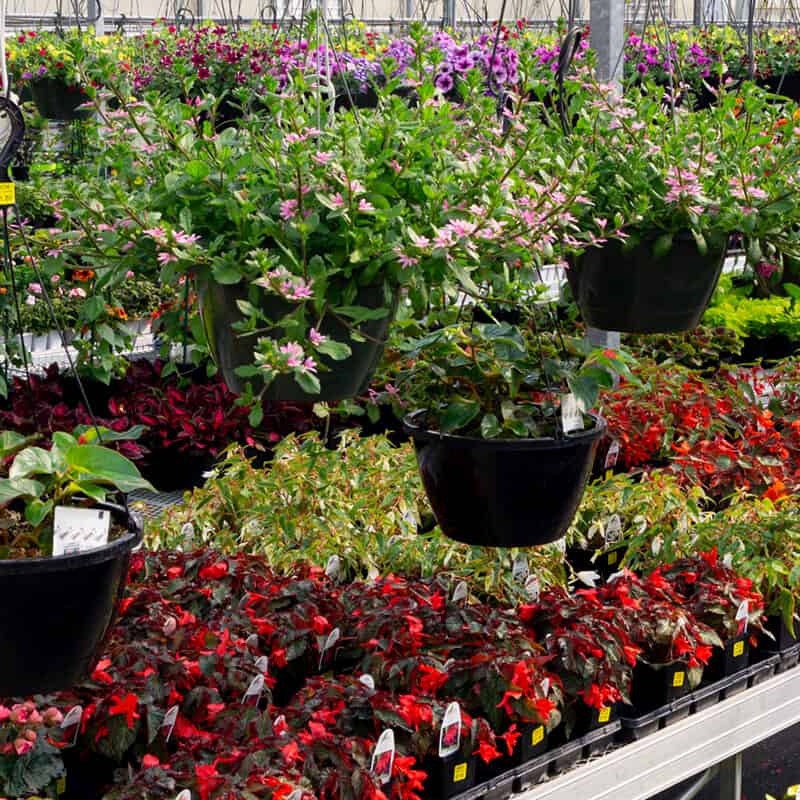
Are you open year round?
Yes, we are open all year. However, our business hours vary from season to season. Please check back here before visiting if you’re unsure about when we’re open, or call for current hours.
Our Spring season begins early May and runs through June. The poinsettia crop is at its best between mid November and early December.

Is there a guarantee on plants?
While there is no guarantee on our plants, we are always interested in helping you to discover the source of problems you may be having with your plants. Please contact us with any questions on plant products you have purchased.
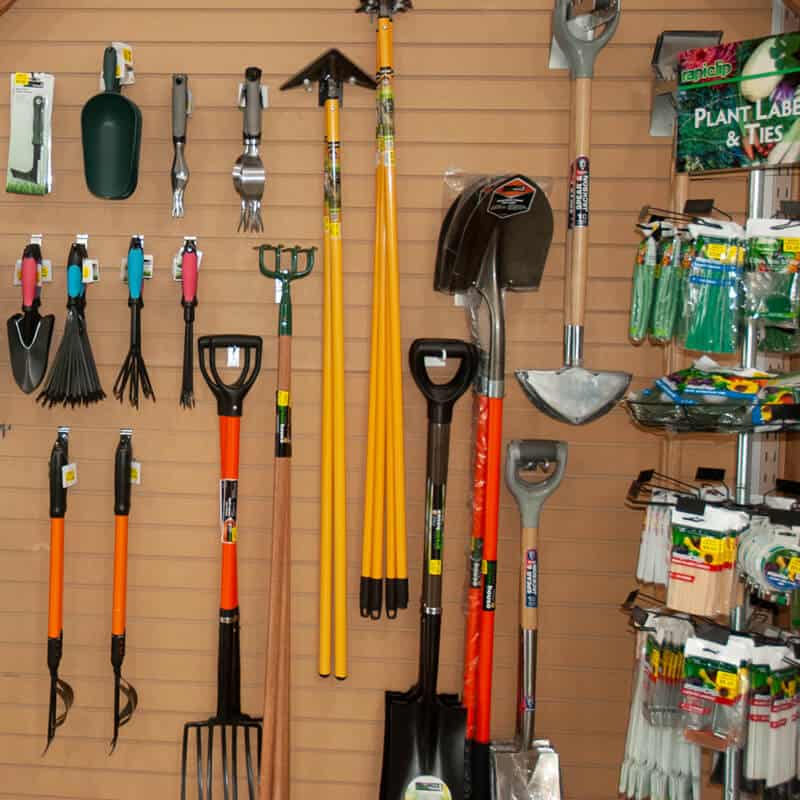
What is the return policy on non-plant purchases?
The original sales receipt must accompany any non-plant returns. Sale merchandise is sold as is and is not returnable. Regular-priced merchandise must be returned within seven days in original condition. We endeavour to carry quality merchandise. However we cannot always protect against defective items. In the event you find that a non-plant product is defective, please return it with the original sales receipt at any time during the current season.

Do you offer discounts?
We recognize a variety of local plant interest groups, including the Edmonton Horticultural Society. Valid Card-carrying members receive 10% off all regularly-priced plants.. Member cards must be presented to the cashier before purchases are rung into the till.
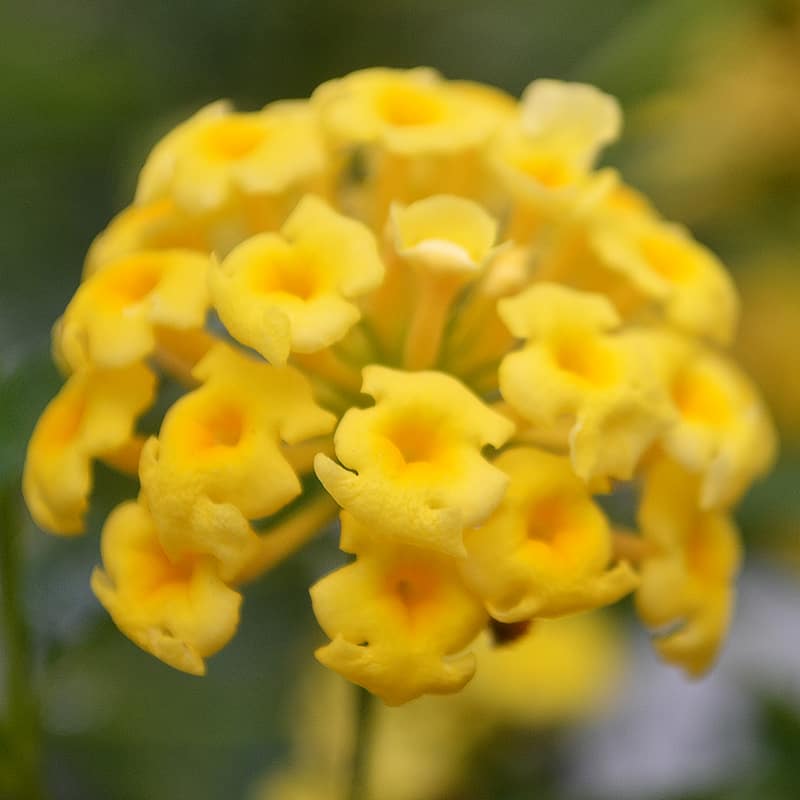
What does it mean to harden off my plants?
Hardening off means to gradually acclimatize your plants to the location they will be planted in. In the greenhouse, plants are in a more humid environment than outdoors in Alberta. The Sun in Alberta is very intense and because humidity is low, relocating sun-loving plants – recently purchased from the greenhouse – directly to a sunny outdoor location can be very hard on them.
Generally, it is recommended to put plants outside in the shade for four to 10 days before transplanting them. If weather conditions are hot and dry, plants will need longer to get used to the new environment. If conditions are overcast for an extended period or if plants are going into the shade, they could be planted in their final location immediately.
Some plants like begonias, coleus and tomatoes are very temperature sensitive. Early in the season, these types of plants may need to be protected if night temperatures get low.
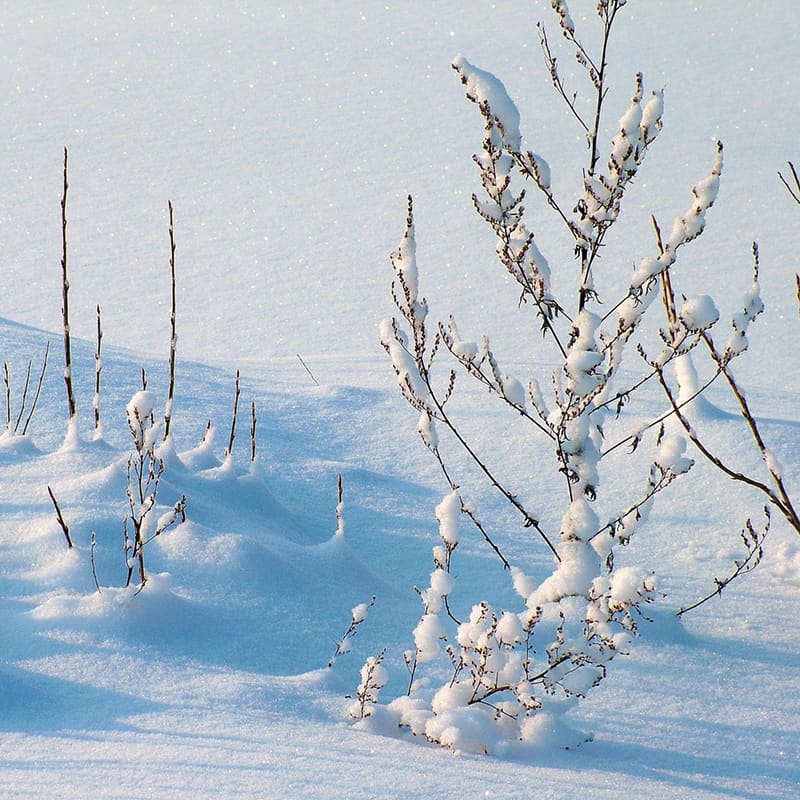
Should I cut the dead foliage and stalks from my perennials to get the garden beds ready for winter?
No. The dead stalks and dead leaves can act as insulation protecting the crown of the plant from the cold as well as helping to trap snow, which is the best insulating blanket a perennial can have. If you absolutely must have a tidy garden, then cut the stems to a uniform 12″ height.
There is an added benefit to not cutting as well – perennials with their seed heads left on will provide winter food for birds.
Note: There is an exception. Peony plants must have all the dead leaves cleared away and the stalks cut to about 2″ above the ground. Do not compost this; bag it and put it out in the garbage. Peony debris can harbour botrytis – a grey mould – that can be very damaging to the plant.
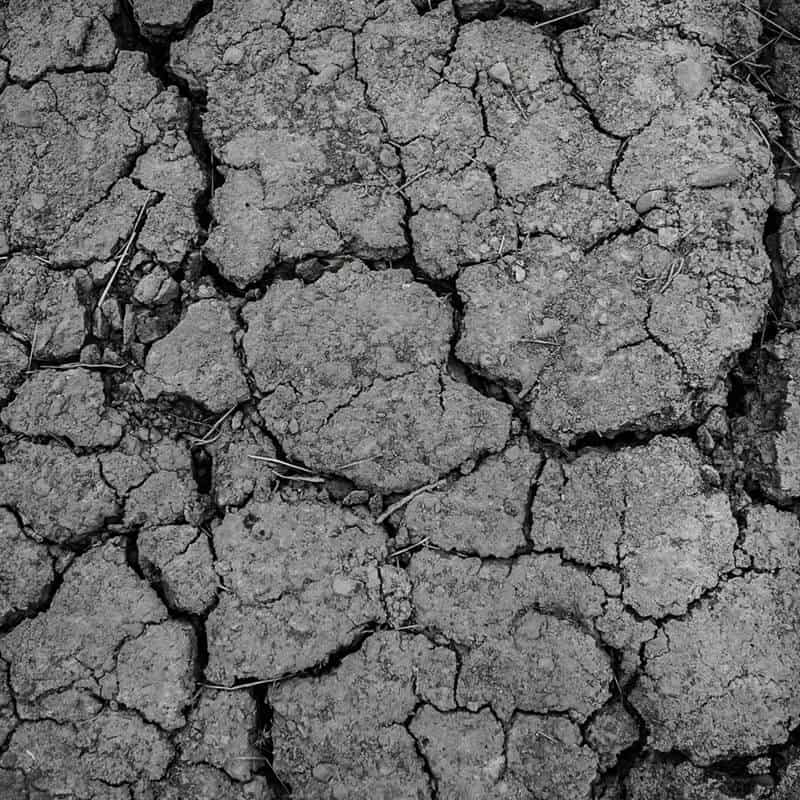
A lot of my perennials didn’t come back in the spring. How come?
The most common reason is a lack of moisture. Perennial beds need to be moist going into winter. If the soil is dry it can be very hard on trees, plants and shrubs. The Capital region has experienced very dry late falls the last few years, so it’s important to keep an eye on the soil, and water if necessary. Even in November if it’s been mild with no rain or snow.
Also, in areas where the snow is quick to leave in the spring, the plants can be covered with a 4–6” layer of mulch (leaves or peat moss) once the ground is going to stay frozen solid and left until it is certain the warmer weather is here to stay. Quite often there is a week or two in February or March when the weather gets unseasonably warm, the snow melts, the soil warms up and the little plants wake up and start to grow – only to be blasted with -30°C for the next two months. Tender new growth can’t survive that.

Why didn’t some of my new perennials seem to do much this year?
Some perennials will put on a good show the first summer they are planted. Others need to get accustomed to their new home. A good rule of thumb is that perennials are planted for next year, not this year. A perennial gardener is, of necessity, a patient gardener.
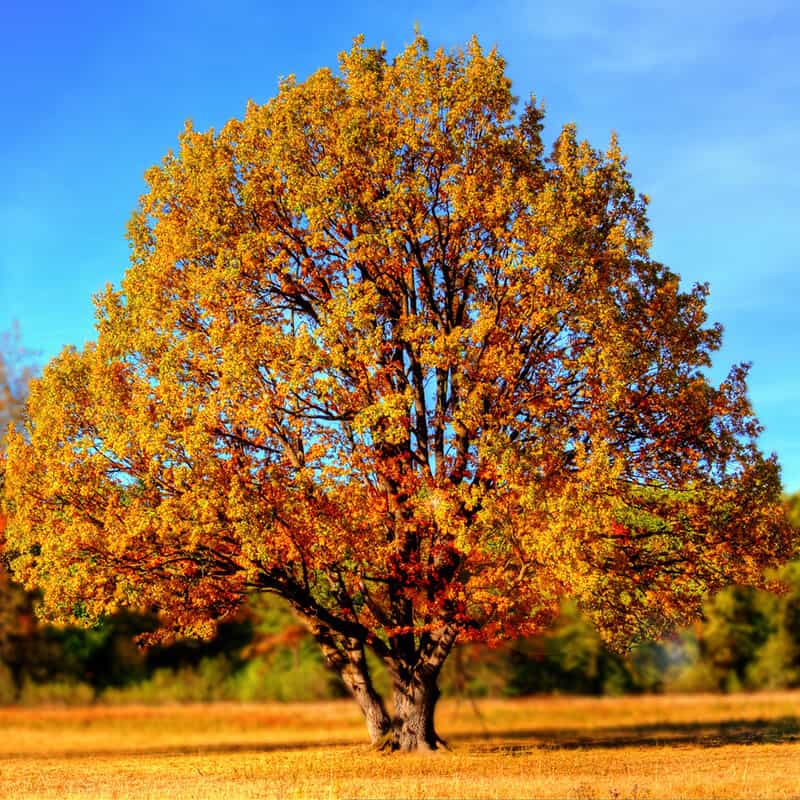
How late can I plant perennials?
Perennials can be planted right through to fall, usually until at least the end of September. As long as they have a couple of weeks of warm weather to settle in, they’ll be fine.
If you don’t think there is enough time for your perennial to adjust, just plant it in its pot. It will survive quite nicely and you can dig it up in the spring and then plant it properly.